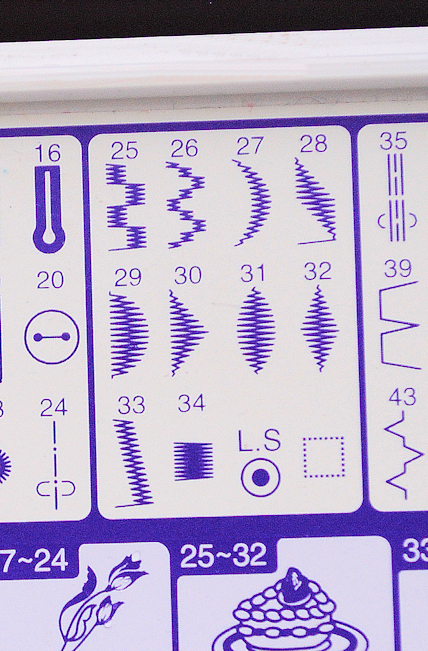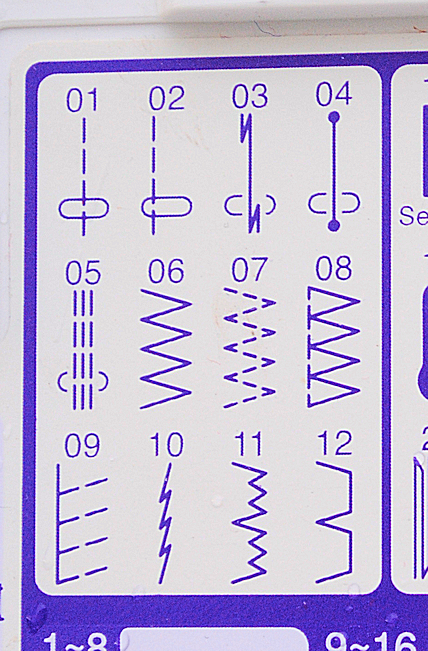A Beginner’s Guide to Understanding Sewing Machine Stitches
Have you ever wondered what on earth all those stitches are when you look at your sewing machine? Beyond the straight stitch and zigzag, you have a guide to sewing machine stitches but it can’t help you if you don’t understand all those other stitches as well.
In the beginning when I got the prospectus in my hand, I wondered how could I use so many different stitches?
I think you also thought like that.
Here I am going to discuss those unknown stitches.
The stitches that different sewing machines can do varies. While some machine only provide a few basic ones, others provide many types stitches. It might be a bit confusing to have so many stitches in one place! Therefore, today I’m going to break it down and help you know your sewing machine stitches.
So, Now I am going to introduce you with many more stitches.
Simple Stitches:
- Straight Stitch: From left side of this image 1: This is just the standard straight stitch that you would use most of the time when sewing.
- Straight Stitch with Needle Far to the Left: If necessary, you can use this to sew far to the left.
- Lock-a-Matic Stitch: This stitch eliminates the need for you to backstitch by automatically knotting at the start and finish of your stitching.
4-Locking Stitch: Use this stitch to create an knot at the start but not visible fully and finish of your seams. For situations in which the knotting must be hiding.
5-Triple Stretch Stitch: Use this when you need a lot of stretch combined with durability. Such as under the shirt’s shoulder.
6 Stitch: Its a traditional zigzag stitch.
7-Multiple Zigzag Stitch is useful for finishing the edges of flexible fabrics that are likely to pucker when stitched normally. This will help to avoid that from occurring.
8-Overcasting Stitch is employed to provide a polished edge. This is used in conjunction with a unique foot on my machine called the Overedge Foot, which guides fabric while sewing. To find out if you have this option, take your manual and look into it..
9-Knit Stitch is used when sewing on knits and stretchy materials. Trim off any extra, unsewn fabric on the seam along the stitches after sewing using a bigger than usual seam allowance along the edge of the fabric.
- Stretch Stitch: This stitch is useful for sewing on knits and other situations where the stitching must be able to flex.
Use the 11-Blind Hem Stretch to stitch stretch materials with a blind hem.
12-Blind Hem: This is useful for stitching a blind hem.
Buttonhole Embroidery:
13-Sensor Buttonhole: If I insert the button into a certain foot that I use when sewing this stitch, it will produce a buttonhole precisely the right size for my button.
14-Automatic Buttonhole: If I tell the machine what size the button is, it will make a buttonhole on its own.
Round end buttonhole (15): Usually used on medium weight fabrics.
16-Keyhole Buttonhole: Lightweight, delicate fabrics are suitable for this type of buttonhole.
17-Rounded Keyhole Buttonhole: This buttonhole looks wonderful with larger buttons and works well with medium to heavy weight fabrics.
Use the 18-Stretch Buttonhole technique on elastic materials.
19-Knit Buttonhole: Suitable for use with knit textiles.
20-Button Sewing: I can sew a button in place with this and a specialized foot.
The 21-Darning Stitch fixes holes rips.
22-Tracking: Strengthen areas like pockets and crotches where further assistance is required.
23-Eyelet: Forms a hole for an eyelet.
24-Basting Stitch: these stitches hold layers of fabrics together preventing them from moving.

Satin stitches:
those are lock stitches close zigzag. It looks like the stitches are made straight but alternately go to create a smooth, solid surface. Or on the edge it creates a nice finishing. These stitches are ornamental, used for blanket edges or similar items. OR you can use it for making designs on your edge part of a dress.
Edge stitches:
35-Saddle Stitch
36-Saddle Stitch: its use for sewing booklets.
37-Double Overedge Stitch: Finish the edges of fabric that has a tendency to fray a lot by using this stitch.
38-Overlock Stitch: This stitch produces an edge finish akin to that produced by a maker. creates a look that appears more professional.
39-Shell Tuck Stitch: An ornamental stitch used as an edge.
Fancy stitches:
Those stitches are for decoration of your fabric. If you want to use those stitches, you have to learn it first. Because, it’s not mandatory to learn to operate a machine.




